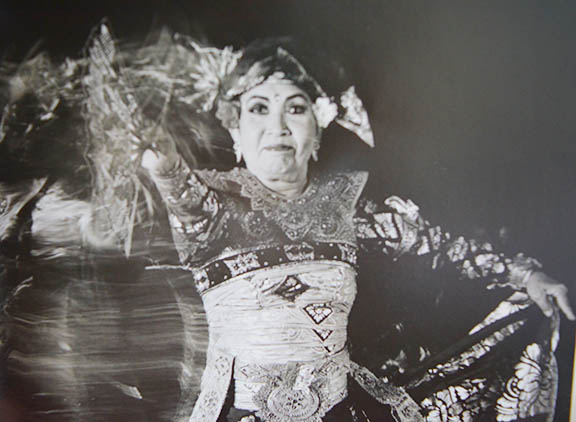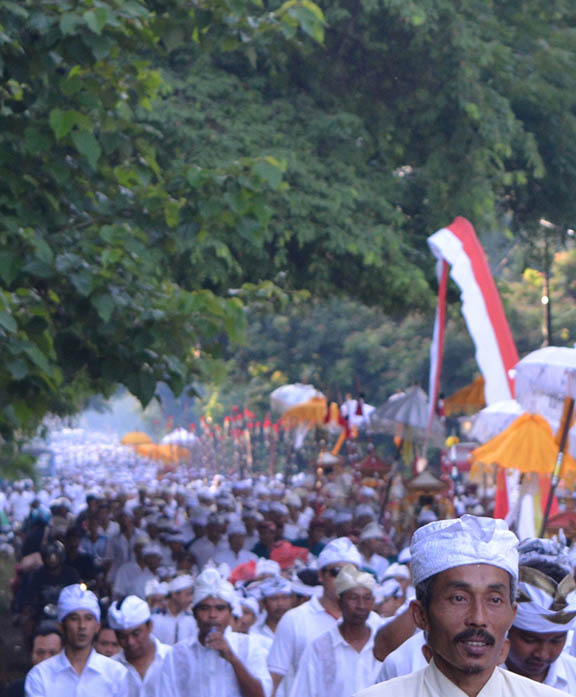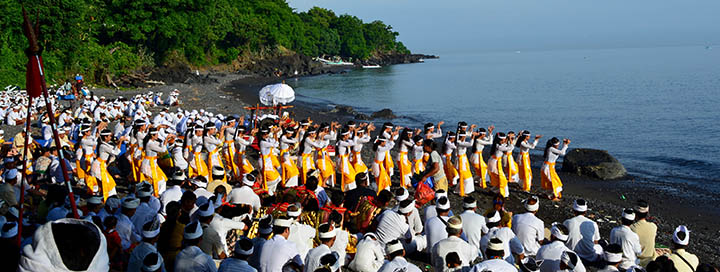Update #5
Meeting with the Masters
Tejakula is the name of the village in which Gaia Oasis (our second home on the trip) is located, and it is a well known center for arts in Bali and Indonesia. Tourism has not quite yet discovered this fascinatingly rich cultural center yet it is well researched within sociological and arts council circles. Margaret Mead herself spent some time in Tejakula while she lived in Bali. An example of how unique the people of Tejakula are is how they have several unique cultural adaptations that are not found anywhere else in Bali. It is also a highly democratized society where in order to reside there you must renounce your caste title, something still recognized in the rest of Bali. The concept of sacred theatre is natural here. Many of the performances and masked dances are performed only for the gods in sacred space. Foreign eyes will never view some of the sacred masks, which are used rarely and only for ceremony.

Last week, I returned to Gaia Oasis to finalize the plans during our stay, and found myself sitting with the incredible Maestros who will be sharing their arts with us at Gaia Oasis. This meeting left me with a deep sense of excitement and awe of what we will be experiencing at Gaia Oasis!
It is with much joy that I write how we will have the privilege of experiencing the following:
-
Gamelan (Brass Orchestra) with Pak Gede Taye (teacher & musician, performed internationally)
-
Kecak/ Genjek (Folk Chants/ a capella) with Pak Wayan Suasta (renowned all-round musician; singer, drummer, dancer)
-
Kekawin (Classical Operatic Singing) with Guru Gede Putu Tirta (a living treasure of Tejakula & puppet master, in his 70s)
-
Wayang Wong who will perform a Dance Drama
-
Classical Dance, eg Puspanjali, Truna Jaya with Ibu Luh Menek (renowned maestro & living legend, in her 70s)

It was a true honor to sit with these luminaires who have had books published about them, and who have gone overseas to perform their art. Along with the Gaia Oasis team, the four masters and I discussed how we would best spend the days we have together in Tejakula from September 11 to September 16th. Without giving away to much detail, each master will work individually with our group. Even more incredible, the masters will work together to perform completely original performances that will combine their arts! Such a feat has not been done before. There was much excitement as the creative juices flowed between these masters, who each have a troupe of 30 – 50 people under them.
Our presence is contributing to refurbishing some of the old costumes that they can share with us. These costumes are some of the oldest and most traditional costumes used in traditional dances that are closest to their hearts and community. We are certainly in for a real treat so we are working on properly documenting the event.
Melis Ceremony
My timing for the visit was indeed very fortunate. In addition to having this amazing meeting with these fine masters, I happen to also be there for one of the major annual ceremonies. This ceremony is called “The Melis ceremony” and is the annual ceremony around Nyepi (Balinese New Year) where the relics of the ancestors are ceremoniously cleansed with the waters of the holy springs and sea. I was invited to join the procession to experience the “togetherness” and informed that the procession starts just before dawn in the morning.
This event is cause for the Baris dance, a dance reserved only for holy events. There was not one but 3 Baris troupes for this ceremony. Preparations start the night before when the Baris dancers in full regalia go to the holy sites around the village, inviting the deities to join the force of the procession the following morning. The whole town was vibrating with energy. The procession starts just before dawn, with us walking to the nearby Ponjok Batu temple (one of Bali’s main temples). It is an elaborate temple and is built on a holy spring site, featuring a stone shrine that likely goes back to prehistoric times of animistic worship.


The procession was massive! It was around 3000-4000 people of all ages and from all the tribes in the area. I did truly feel the energy of togetherness. The power of the community was palatable. All traffic was stopped on one major road in North Bali to allow the procession to pass. The holy artifacts of various temples were carried overhead for 8 km to the sea temple where they were blessed and cleansed for the following year. The people prayed for prosperity and peace for the following year. The young girls performed the first dance, followed by the young boys, followed by 3 sets of Baris dancers. All the performances directed towards the sea, for the sea god Lord Baruna so that he would be pleased and give blessings on the people and their relics, maintaining good energy for the following year. After the performances there was complete silence in prayer, except for the sounding of one bell. It was a stunning ceremony.


Cultural Immersion in Tejakula
The village of Tejakula is remarkable, and the cultural immersion we will receive there is a unique opportunity for us to understand the deep meaning of Balinese performance art. It will also give us an opportunity to learn basic methods of prayer so that later when we visit temples we can do so in a respectful and proper manor.
This trip continues to shape up to be extraordinary! There is still some space left, please spread the word and share this journey with your friends.
With Love from Bali…
Alex and Kartika

